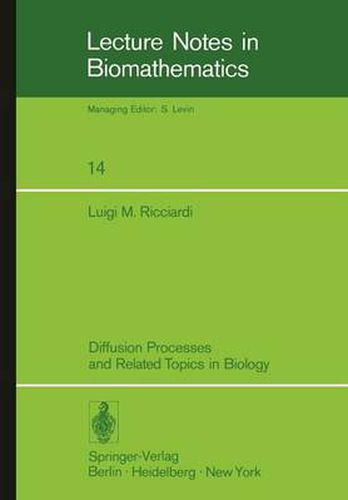Readings Newsletter
Become a Readings Member to make your shopping experience even easier.
Sign in or sign up for free!
You’re not far away from qualifying for FREE standard shipping within Australia
You’ve qualified for FREE standard shipping within Australia
The cart is loading…






This title is printed to order. This book may have been self-published. If so, we cannot guarantee the quality of the content. In the main most books will have gone through the editing process however some may not. We therefore suggest that you be aware of this before ordering this book. If in doubt check either the author or publisher’s details as we are unable to accept any returns unless they are faulty. Please contact us if you have any questions.
These notes are based on a one-quarter course given at the Department of Biophysics and Theoretical Biology of the University of Chicago in 1916. The course was directed to graduate students in the Division of Biological Sciences with interests in population biology and neurobiology. Only a slight acquaintance with probability and differential equations is required of the reader. Exercises are interwoven with the text to encourage the reader to play a more active role and thus facilitate his digestion of the material. One aim of these notes is to provide a heuristic approach, using as little mathematics as possible, to certain aspects of the theory of stochastic processes that are being increasingly employed in some of the population biol ogy and neurobiology literature. While the subject may be classical, the nov elty here lies in the approach and point of view, particularly in the applica tions such as the approach to the neuronal firing problem and its related dif fusion approximations. It is a pleasure to thank Professors Richard C. Lewontin and Arnold J.F. Siegert for their interest and support, and Mrs. Angell Pasley for her excellent and careful typing. I . PRELIMINARIES 1. Terminology and Examples Consider an experiment specified by: a) the experiment’s outcomes, ~, forming the space S; b) certain subsets of S (called events) and by the probabilities of these events.
$9.00 standard shipping within Australia
FREE standard shipping within Australia for orders over $100.00
Express & International shipping calculated at checkout
This title is printed to order. This book may have been self-published. If so, we cannot guarantee the quality of the content. In the main most books will have gone through the editing process however some may not. We therefore suggest that you be aware of this before ordering this book. If in doubt check either the author or publisher’s details as we are unable to accept any returns unless they are faulty. Please contact us if you have any questions.
These notes are based on a one-quarter course given at the Department of Biophysics and Theoretical Biology of the University of Chicago in 1916. The course was directed to graduate students in the Division of Biological Sciences with interests in population biology and neurobiology. Only a slight acquaintance with probability and differential equations is required of the reader. Exercises are interwoven with the text to encourage the reader to play a more active role and thus facilitate his digestion of the material. One aim of these notes is to provide a heuristic approach, using as little mathematics as possible, to certain aspects of the theory of stochastic processes that are being increasingly employed in some of the population biol ogy and neurobiology literature. While the subject may be classical, the nov elty here lies in the approach and point of view, particularly in the applica tions such as the approach to the neuronal firing problem and its related dif fusion approximations. It is a pleasure to thank Professors Richard C. Lewontin and Arnold J.F. Siegert for their interest and support, and Mrs. Angell Pasley for her excellent and careful typing. I . PRELIMINARIES 1. Terminology and Examples Consider an experiment specified by: a) the experiment’s outcomes, ~, forming the space S; b) certain subsets of S (called events) and by the probabilities of these events.